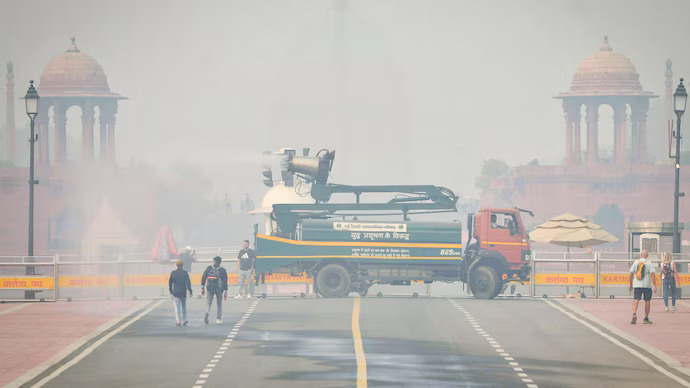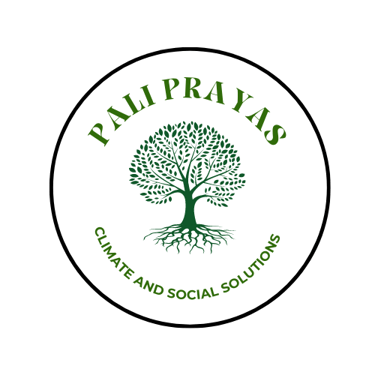Why Delhiites Pretend Pollution Is Normal — And Why That’s Dangerous


Every winter, Delhi is shrouded in a curtain of smog. The air smells burnt, the eyes sting, and doctors warn that breathing outside is like smoking dozens of cigarettes a day. This year, former AIIMS Director Dr. Randeep Guleria even said people should “leave Delhi for 6–8 weeks” to protect their lungs.
But step out in the city, and you’ll find something strange—most people aren’t talking about it. They complain a bit, wear a mask for a few days, and move on. How can a city choking every year act as if nothing is wrong?
The answer lies in how politics, missing data, and daily life have quietly changed the way people think.
Politics that silences urgency
In Delhi, pollution has always been a political issue—but never as complex as it is now. Earlier, when different parties ruled the city and the Center, blame was at least visible. Delhi’s government accused neighboring states of crop burning, the Centre blamed local traffic and construction, and people could see the tug of war. It was frustrating, but it showed that someone was being questioned.
Now, that clarity has vanished. With one party holding power at the Centre, in neighboring states like Haryana and Uttar Pradesh, and now even steering Delhi’s administration through the Lieutenant Governor, there is no one left to blame—and yet, there is no one taking full responsibility either. The political fight has become quieter, not because the problem is solved, but because the conversation has been smothered by control.
When political power becomes one-sided, accountability weakens. Bureaucrats stop speaking up. Environmental agencies work more to please the leadership than to protect the public. Reports that show failure—missing data, non-functional air monitors, or meaningless water-sprinkling drives—are softened or delayed. Politics begins to treat clean air as a public relations issue, not a public health crisis.
And the people, watching this silence from the top, learn to be silent too. When no leader admits that the situation is critical, when every press release says “everything is under control,” citizens slowly start believing that it’s not their place to worry. Politics, in this way, doesn’t just fail to clean the air — it reshapes how people think about breathing it.
This is the real tragedy: a city ruled entirely by one political color but with no political will to clear its own sky.
Missing data, manipulated readings, cosmetic fixes
It gets worse. Independent investigations report major flaws in how Delhi monitors air quality. One audit found that many Continuous Ambient Air Quality Monitoring Stations (CAAQMS) are placed in inappropriate locations, don’t record data for required hours, and lack measurements for key pollutants like lead. mint
A more recent ground check found display boards nonfunctional, sensors hidden behind trees, and water-sprinkler trucks operating around the monitor stations—allegedly reducing local dust and thus lowering the reported numbers near the device, even as the air elsewhere remained heavily polluted.
Here’s what these practices do psychologically:
They reduce trust. If I cannot rely on the data, I ask, why should I care?
They create the illusion of improvement. If the readings drop (even artificially), one may think, “Okay, maybe it’s under control.”
They shift the focus to technicalities rather than health, turning “pollution” into “sensor placement” or “AQI reading” rather than “my lungs.”
And the sprinkling of water at or around monitoring stations? It becomes a cosmetic measure. A tanker sprays water, dust settles, the monitor reads slightly better — but the broader ambient pollution persists. Locals report that while the monitor might show “moderate” or “poor”, independent readings nearby show “very poor” or “severe”.
Why does this breed apathy among Delhiites?
When you combine politicisation + data doubt + cosmetic action, the outcome is predictable: people stop believing that they, as citizens, can influence the situation. If the government plays politics, if the data is suspect, if the actions seem symbolic — then the message becomes, “What difference can I make anyway?”
Another layer: people see pollution as part of life. When mosquitoes bite every summer or water shortages hit every dry season, you adapt. Smog becomes seasonal. So they may complain but not act. Worse: they stop even worrying. Because worrying without hope is exhausting.
What could break the cycle?
For the public to care again — really care — three things need to happen:
Transparent, trustworthy data
No hidden sprinklers, no manipulated readings. Monitoring stations must meet standards, show live data, and citizens must trust them.Politicians treating pollution as a health emergency, not campaign issue
If both parties stop turning it into blame & optics and start treating it like a crisis, then public urgency returns.Real-world, visible action, not just ‘sprinkle water and hope’
Dust-suppression around monitors counts for little if 70% of the air comes from major sources like traffic, construction, crop-burning. Citizens need to see change: older high-pollution vehicles off the road, stubble-burning reduced, industries regulated, public transport improved.
Delhiites deserve to breathe with confidence, not hold their breath. The problem is not the lack of warning — doctors and scientists have been warning for years. The problem is what the politics, what the weak monitoring, what the “sprinkle water and call it clean” mindset has done to our collective will.
Ignoring the smog isn’t resilience. It is surrender.
If the city’s elite, its workers, its youth, and its mothers stop talking about air, that doesn’t mean the air has improved. It means we’ve stopped believing we matter.
And in a democracy — a city of 20+ million — that’s the most dangerous pollution of all: silence.
